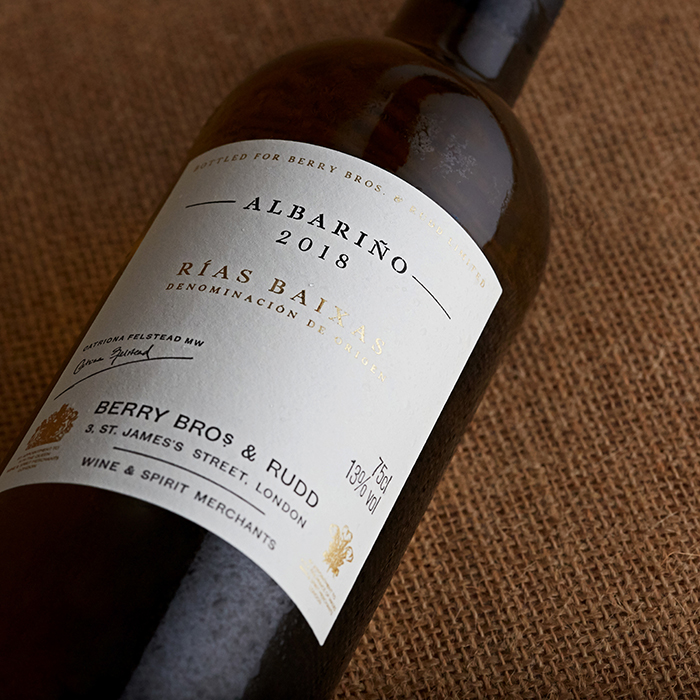Albariño: everything you need to know
Author: Catriona Felstead MW

When it comes to “trendy” grapes, Albariño is a rare case of one that has managed to transition from being a sommelier darling to an established name on the shelves of any self-respecting wine merchant. From its small, remote heartland of Galicia in northwest Spain, the crisp, saline yet textured wines of this variety have gained fans across the world.
Where is it grown?
The origins of Albariño in Galicia are inextricably linked with the wine region of Rías Baixas, a Denominación de Origen (DO) just south of Santiago de Compostela.
Albariño has been grown here for over a thousand years – which has given this naturally thick-skinned grape, and the generations of vine-growers working with it, plenty of time to adapt to the damp, rainy conditions of the area. Vines are, even today, trained on pergolas, traditional trellises raised high above the ground (in a style not dissimilar to a rose arbour) to reduce the risk of rot from the high level of humidity, as moisture evaporates from the ground after the rain.
Across the border in Portugal, Albariño goes by the name of Alvarinho, where it can make up all or some of the blend for Vinho Verde. Here the wines tend to be greener and leaner in style.
Beyond the Iberian Peninsula, this grape is rarely seen – although producers are experimenting with it elsewhere, including the US, Australia, New Zealand and Uruguay.
What do the wines taste like?
Supremely refreshing, Albariño is distinctively full-bodied, sometimes enhanced by spending time on lees to give it a creamier texture, balanced by vibrant acidity. It’s rarely oaked, with winemakers choosing instead to preserve the varietal character with pure, fruit-forward wines. (Although, as ever, there are some fantastic exceptions that are barrel-fermented, The best wines have notes of florals, peach, apple and citrus fruit, with a trademark saline, mineral note.
What should I eat with it?
It makes an excellent apéritif, but, with its saline freshness, is particularly good with seafood* – no great surprise given its Atlantic origins. Shellfish or white fish works best. With its fuller body and texture, however, it’s incredibly versatile, not to mention reliably crowd-pleasing.
Try: 2018 Berry Bros. & Rudd Albariño by Bodegas Sucesores de Benito Santos, Rías Baixas, Spain
The Rías Baixas DO comprises five separate sub-zones around the town of Pontevedra: Val do Salnés, O Rosal, Ribeira do Ulla, Soutomaior and Condado do Tea. Of these five, Val do Salnés is the coolest area, widely considered to produce the crispest wines with the most sea-salt (saline) character, which is hardly surprising when considering its position right on the western coastline.
Our own-label Albariño comes from here, and its bright, mineral character and refreshing, vibrant energy is a wonderful reflection of this unique corner of Spain. Our partnership in making this wine with the excellent Bodegas Sucesores de Benito Santos feels particularly apt, given that its original owner, Señor Benito Santos himself, is credited with playing a huge part to conserve the Albariño grape in this region; a task that took him from working in his grandfather’s vineyards in the 1930s to becoming the most decorated winemaker of the annual Fiesta of Albariño in Cambados. Tradition and modern day combine, with a refreshing nod to history, in this fantastically invigorating Atlantic wine.
Explore our range of Albariño here
*Lots of fishmongers are offering deliveries at the moment, including those that would previously have only sold to restaurants: Rocket & Squash has a good short-list of suppliers to try.


